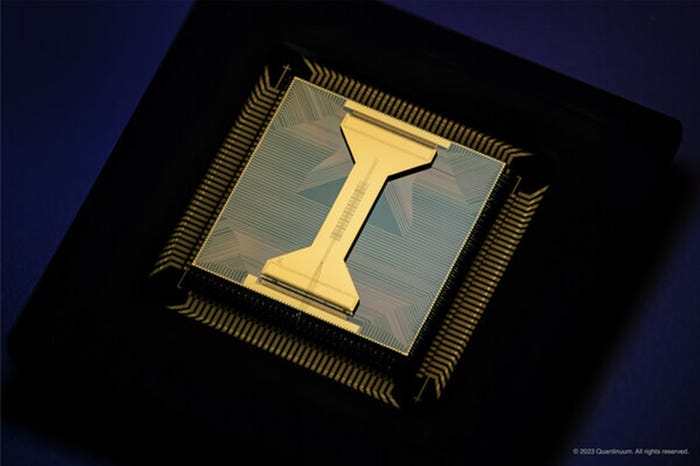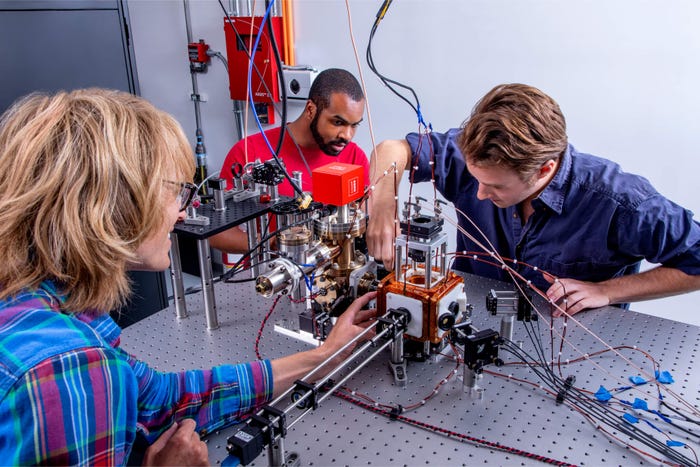
Connects decision-makers and solutions creators to what's next in quantum computing
Boeing Carries Out First Quantum Navigation Flight TestBoeing Carries Out First Quantum Navigation Flight Test
Quantum navigation sensors enabled an aircraft to navigate without GPS during a four-hour flight

Boeing has carried out a four-hour flight test using a quantum navigation system instead of GPS, the first time the technology has been used on an aircraft to produce real-time navigation data.
Quantum technology offers a potential solution for navigating in a GPS-deprived environment, which could be caused by service outages, or blocking or spoofing by an adversary.
The Boeing team integrated a six-axis quantum inertial measurement unit (IMU) into a full inertial navigation system and deployed it on a Beechcraft 1900D aircraft.
Boeing used the quantum sensors for takeoff, landing and multiple maneuvers during a four-hour flight test out of St. Louis Lambert International Airport in St. Louis, Missouri.
According to the company, the accuracy of the quantum navigation system would enable aircraft on most commercial airplane routes to navigate without GPS for the entirety of a flight.
“Boeing is extremely proud to be leading the development of quantum technology that will improve the safety of flight by enabling precision navigation under all conditions,” said Boeing principal senior technical fellow Ken Li.
Quantum technology company AOSense designed and built the quantum IMU in collaboration with Boeing. It uses a quantum sensing technique called atom interferometry to detect rotation and acceleration using atoms, resulting in very high navigational accuracy and precision without a GPS reference.
The IMU consists of three quantum inertial sensors, each of which measures single-axis accelerations and rotations of the airplane and keeps track of the path the airplane takes from its initial position.
“The ability to safely operate in GPS-denied environments is critical to both defense and commercial applications,” said Boeing chief technology officer Todd Citron.
“This flight test shows Boeing’s innovative approach to leveraging quantum technologies for operationally relevant challenges.”
The technology began life as three single-axis sensors operating in a laboratory environment. Over 15 months the Boeing and AOSense team conducted laboratory, ground vehicle and flight tests to improve the capability and reliability of the sensor in the lead-up to the flight test.
“Such rapid advancements indicate great promise for quantum sensors to be part of the next generation of navigation sensors,” said Boeing principal senior technical fellow Jay Lowell.
“This flight test is a historic first step in that direction.”
About the Author
You May Also Like






